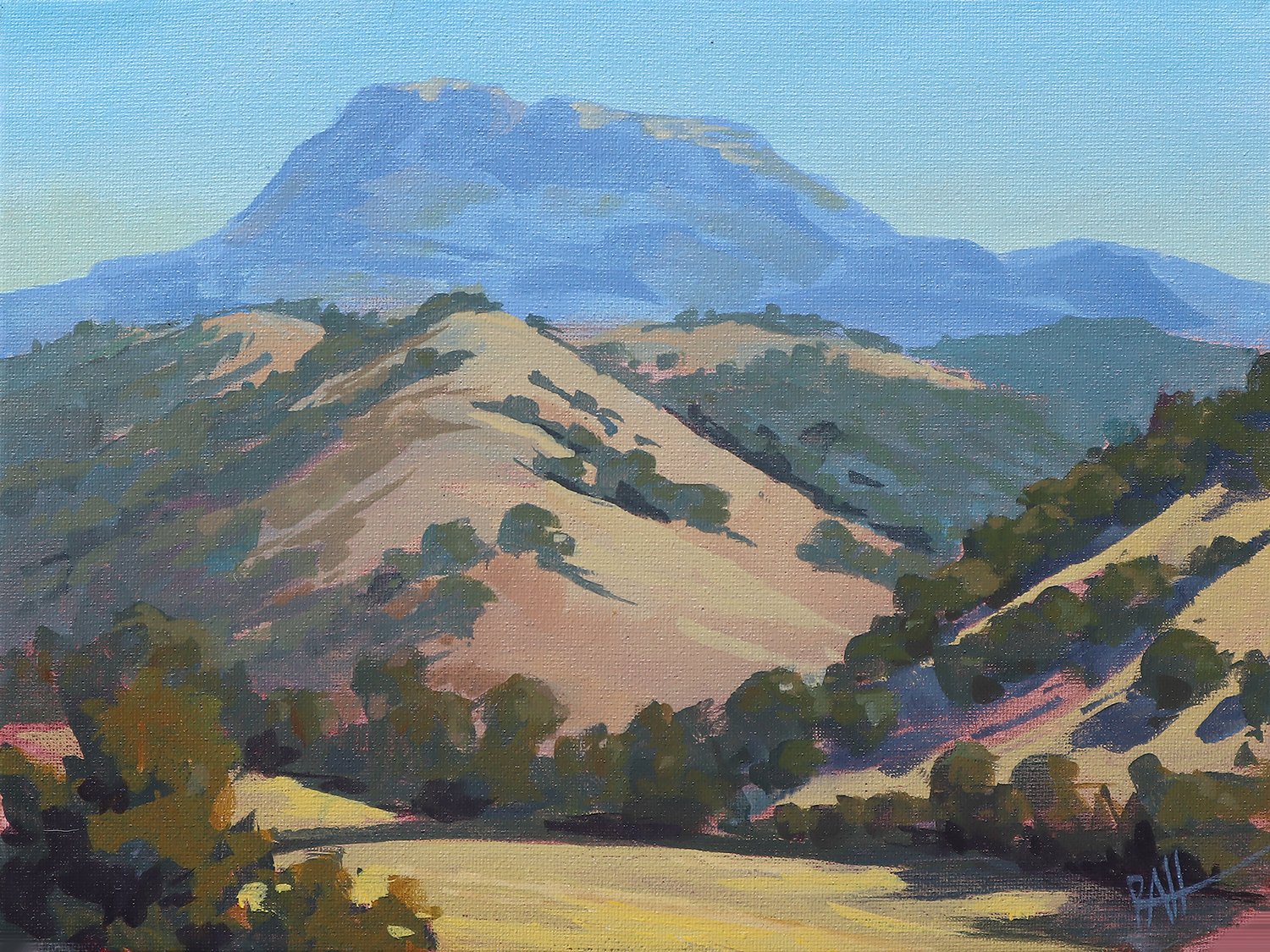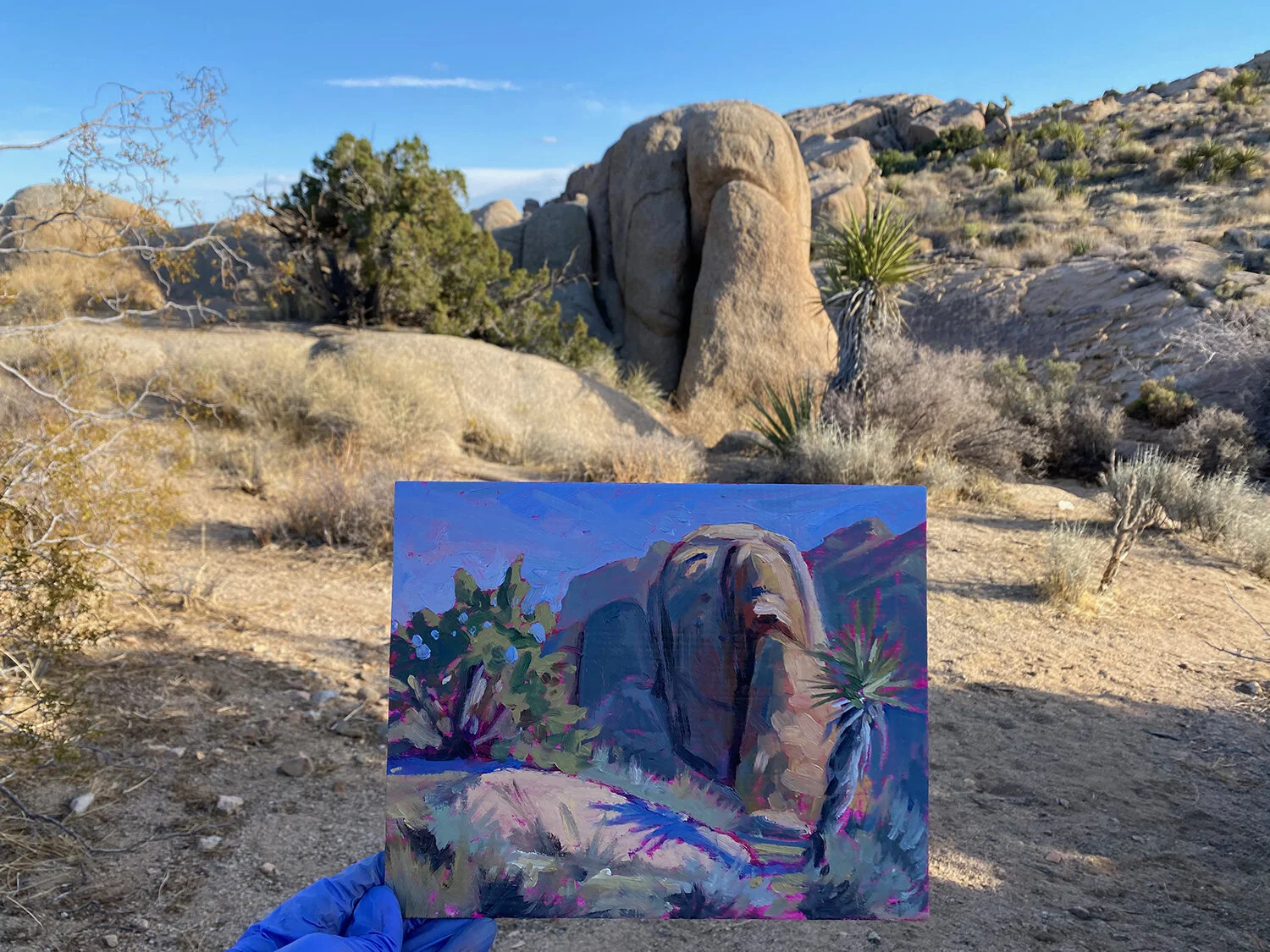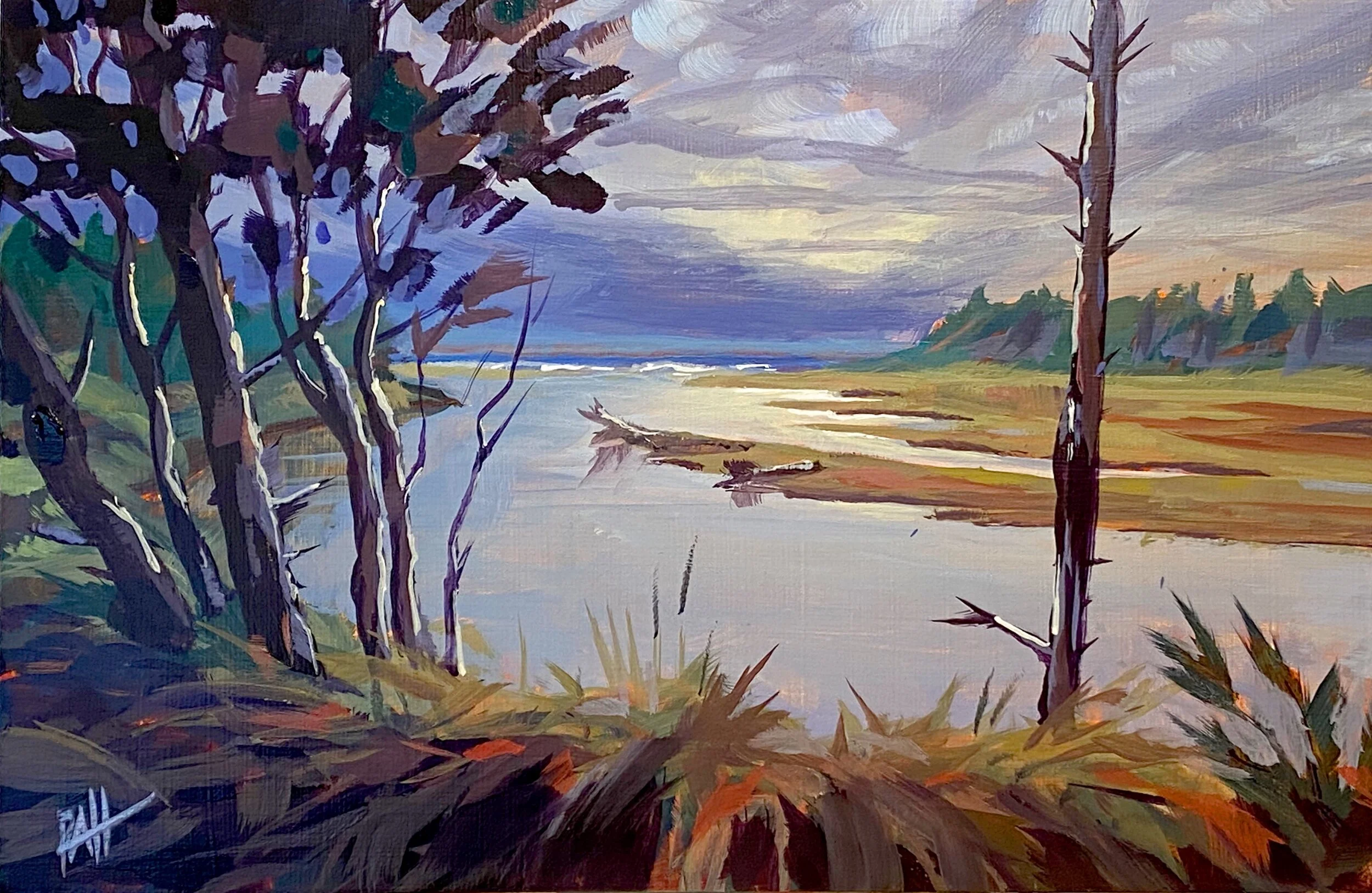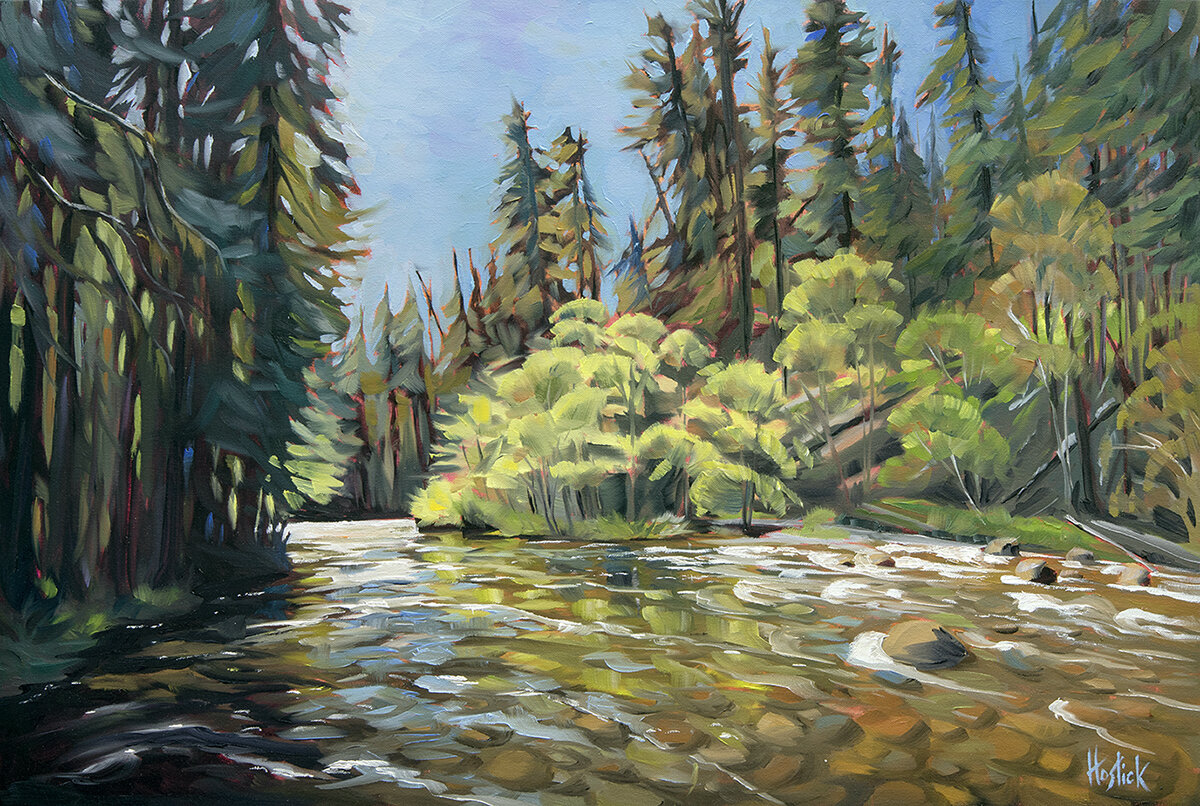Take a moment, if you like, to imagine a wonderful, wild place that’s special to you. I might be a place you know well, or maybe one that has stuck with you over the years. It could be near or far. Just let your mind go there. See the quality of light and colors. Hear the sounds. Feel the temperature and wind. How do you feel?
Here’s one way you can bring the spirit of that place into your daily life.
I’ve made it part of my purpose as an artist to bring joy and wellbeing to people through art. I’ve mentioned before the strong connection between visual arts, nature, and human happiness. These days, that feels like an especially worthy mission.
Psychologists tell us we spend a lot of our time and energy trying to feel good, one way or another. I can think of a few favorite go-to shortcuts right now. Right? But there aren’t many ways to achieve this aim that are as healthy, long-lasting and effective as bringing beautiful artwork – that speaks to you – into your life.
In fact, this was a big motivator when I started painting landscapes seriously about 17 years ago. We spent our free time finding adventure and wild beauty outdoors, and I wanted to bring those positive experiences back home with me. We also had a home with a lot of blank walls and a few commercial prints and posters.
I’m a pretty skilled photographer, and although I really enjoyed beautiful photos of our adventures, it wasn’t quite doing the trick for me. For one, photos are usually pretty small. Because the landscape is so vast and embracing, I felt larger images were needed to really get the effect. But even a photo enlargement left out too many important qualities of experience.
Intuitively, I knew I had to draw more deeply on my lifelong art practice. Specifically, I had to paint – to develop a style that conveyed how I felt about the land. That process has become my life’s work.
If you’ve read some earlier journal entries, you may already know I had a long career as a landscape architect. I designed all kinds of parks, natural areas, trails, plazas, courtyards, playgrounds – you name it. I got to work on some really cool, iconic projects like the Oregon Zoo and the Oregon Garden.
One difference between most artists and designers is that designers apply creativity to certain purposes our outcomes, whereas artists strive towards personal, creative expression. And, importantly, designers work with clients who have a vested interest in the outcome. Some artists work with clients too, of course. It’s a blurry line and many talented designers I know are also artists, and vice versa.
I always enjoyed working with clients through the process of collaboration. I learned to ask a lot of questions and try to home in on what someone was aiming for. The idea is to build a shared vision. In some cases, for example if the client was the public, it was a long process. In other cases, it was much more personal and direct.
Having now dedicated myself to fine art, I find I still really enjoy collaborating with other people and I’m happy to discover there are many ways to do that. Commissions are a great example. I call them “landscape portraits” or “portraits of the wild” to convey the kind of personal connection we have with special places.
Working with someone to paint a portrait of a place that’s special to them is just as interesting to me, artistically, as painting subjects entirely of my own choosing.
I don’t worry, as some might expect, about compromising my artistic integrity. Why? Because I trust myself to take on commissions that move me or challenge me. That’s also the best guarantee I can give a client that the work will be every bit as rich and alive as my personal work.
Generally, it goes like this:
If you’re interested in a commission, we set a time to connect and talk about what you’re looking for. It could be a specific place or a type of environment, or something that evokes a certain feeling. Or a color theme may be important to you. We work together to figure that out and define a direction for the painting, as well as the size and medium.
Context is important, too. It’s good to know where you’ll place the artwork, the lighting, and surrounding colors.
At that point, I may need to gather source material and inspiration. Depending on the time of year and subject, it can take time to find the right inspiration, for example through forays into the field or searching my references. Or you may already have some of your own you could share. Once the inspiration is in-hand, we have another conversation about what speaks to you and why.
Then the artwork begins. I create a small sketch study of your proposed painting that generally shows the subject, composition, and colors. With your agreement, I get to work on the final piece.
If it’s a very large painting, most likely I would build a custom stretched canvas. My most recent commissioned artwork, for example, was 96 x 42 inches (8 feet x 3.5 feet). Check out this short video to see how the canvas is made.
After that, time flies and the paint flows – for hours or days or weeks as the work demands. For large and thick oil paintings, it can take up to a month for the work to dry enough to handle safely.
It’s an adventure in itself! And it’s also super fun. Through it all we enjoy the anticipation of the artwork and what it will bring.
Read on for a real-life example:
The large painting I mentioned earlier was commissioned by a couple for their new home – an open, bright space with tall ceilings nestled in the forested hills. The client loved old growth forest and had spent many blissful hours hiking through these amazing landscapes around Oregon. She wanted to bring the mystery and light of the forest into the main living area – essentially to open a new window on a large interior wall. Purple was among her favorite colors, along with the cooler tones of the forest.
We looked at the space together and talked over options for size and proportion. At this time, I got the gist of what she was after and was super excited to take on the challenge. Like many Oregonians, I’m a huge fan of old growth forest as well.
But forest interiors can be tricky subjects. There’s a lot going on.
I visited a few of my favorite ancient forests on day trips from Eugene, places like Opal Creek, the upper McKenzie, and Kentucky Falls. I gathered hundreds of references, which is my normal practice when I’m out and about in the wilds.
The client also offered to pull together some images that spoke to her. We compared notes and walked through the images to find out what it was about each of them she was drawn to. There were a few specific features about these places that she loved, for example the old, rust-colored cores of long-gone trees, conchs (a plate-sized fungus), moss, and lots of ferns.
At that point I had a pretty good idea how the painting might come together. In all my wanderings I had not come upon what I felt to be the perfect composition of these elements. The natural solution was to use my references to create a composition richer than the parts.
I drew a full-color sketch of the final composition and shared it digitally. They loved it.
After that, it was several weeks’ work to build the frame, complete the painting, allow it to dry, and prep it for hanging. Their home is now transformed with an artwork that matches the home’s interior themes and brings its residents joy and wellbeing every day.
And that feels great!
If you’re curious about commissioning your own landscape portrait, send me a quick note and we can talk it over. I’m a little biased, but it’s an experience I wish everyone could have.






























